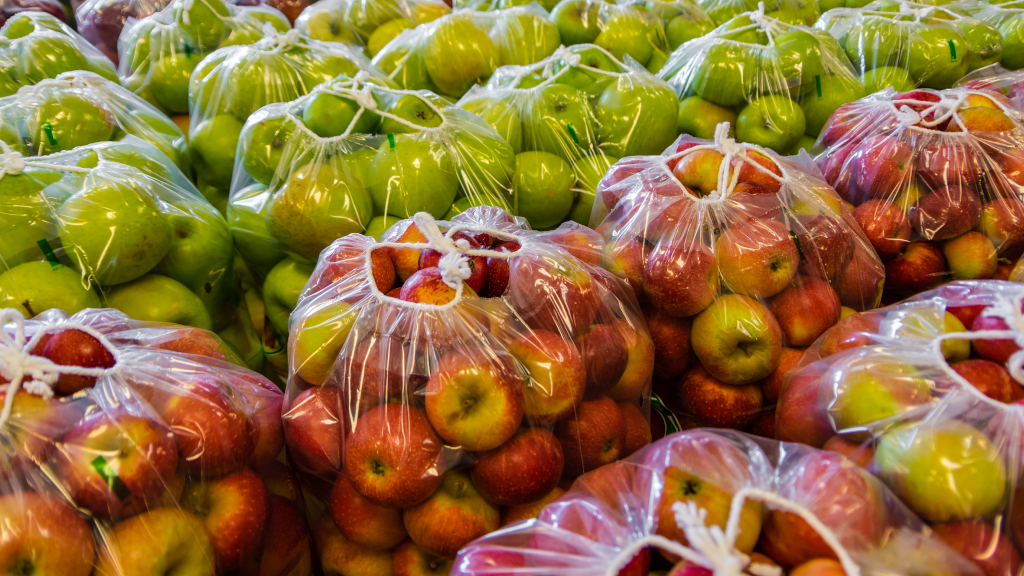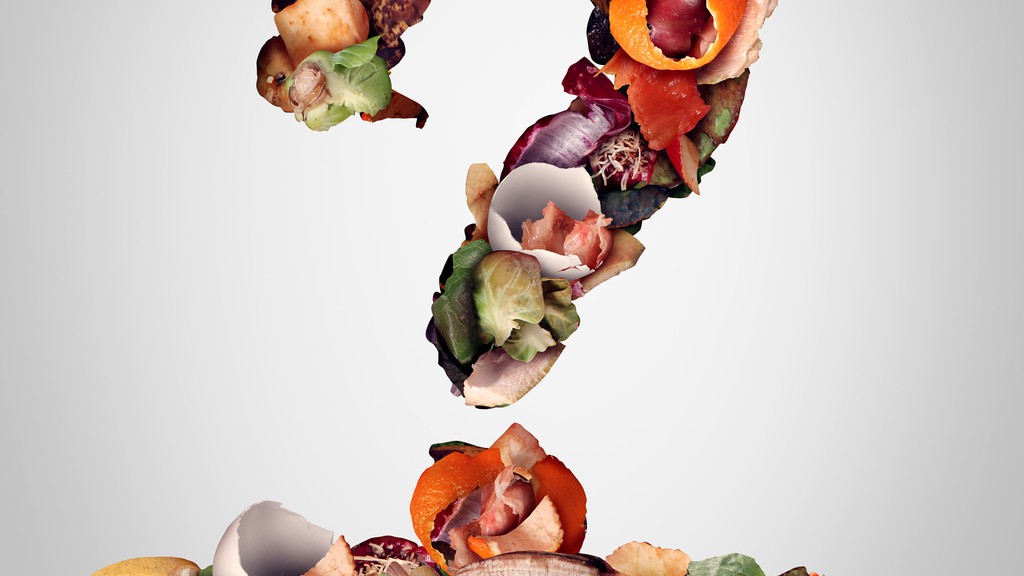When was the last time you sat down and really thought about where your food came from- What factories it traveled through, what processes the raw ingredients went through, how it was transported from farm to factory to store to table? Fortunately, the average consumer doesn’t need to obsessively worry about these processes because all of that planning around the safe production of food has been carefully considered by those involved in its production.
There are heaps of technological processes and hardware that go into creating consumers’ favorite food goods from pasteurizing devices used to kill bacteria to fanless industrial PCs built to manage the production of those goods without spreading harmful contaminants. And in a time where more attention couldn’t be placed on proper sanitation and trustworthy production of our favorite snacks and produce, many are also beginning to see that they can employ blockchain for food safety in agricultural production.
Blockchain for Food Safety- Why it’s Needed
Article Guide
Blockchain technology has been a staple of supply chain visibility for quite some time and its popularity is on a steady rise. This is mostly due to the manufacturing sector as a whole making efforts to improve their visibility as they bring their supply chains into more local, contained spheres.
This digital means of tracking has long since replaced paper trail documentation of a product’s journey through the often several and complex steps in its creation. Once that information is saved, it can be viewed by all approved team members across different facilities in the same supply chain and can’t be edited or tampered with without express approval, making the solution a great addition for a supply chain’s cybersecurity arsenal as well. Not only does the process save time, it also allows for manufacturers to save crucial information and document steps in production much more accurately.
What’s more exciting for the purpose of today’s topic is that blockchain for food safety can specifically provide a host of benefits due to the inherent complexity behind food production!
Consider a raw ingredient like flour grains. After it’s harvested, it’s processed into flour which is either packaged and sold or used to create other products like bread. From there, that bread can also be sent to other food production plants as an ingredient for a different food product before being sent to a distributor and then over to a retailer. There is an insane amount of steps involved in even the most simple and unprocessed food products. Fortunately, this complexity can be tamed pretty effectively with blockchain tracking and data storage.
Getting Started with Blockchain for Food Safety
Blockchain is largely software-based, but that doesn’t mean proper hardware doesn’t carry some weight in the equation. All of the data and transactions that occur between machines and production lines needs to be accurately recorded. In order to remove the need for paper tracking entirely, many food production plants opt to gather this data with IoT sensors and machinery with IoT capabilities. Naturally, having some infrastructure in place to support these interconnected devices can help. Something like edge computing, for example, can allow you to gather those sensor readings locally and much quicker than alternative methods that involve sending that data off to off-site servers.
You’ll also need reliable hubs and workstations where all of this data can be stored. Not only that, these devices will need to also operate dependably in the ever infection-conscious food manufacturing plant. Whether you elect to use rugged industrial tablets or Industrial all in one PCs to function as the hub for all this data, you’ll want to ensure two things: that they can securely store that data and that they’re built to last.
Hardware that’s designed to be fanless and IP65 certified do the utmost in order to ensure no outside debris or contaminants enter the device. This makes them built to last in variable-prone manufacturing plants and also eliminates the risk of spreading bacteria through fan circulation that could go on to infect entire batches of product.
Industrial hardware such as this that can also be customized to include RFID scanners, CaC readers, or even biometrics can also ensure that the only people inputting data into these highly important blockchain ledgers are those that are qualified to do so.
Blockchain Use Cases for Food Traceability and Control
Blockchain’s ability to enhance the traceability of food products lends itself to quite a few use cases, all of which do their part to enhance the quality and safety of all products throughout their long and complex processing journeys.
1.) Recalls
Imagine that there is a recall for a certain food product. Say, for example, a batch of bread that was sent out to retailers was found to be contaminated. Upon learning this, the bread producer needs to carefully and meticulously go through their entire supply chain and all of its partners that were involved in the production of that batch of bread in order to find the cause for contamination. This search can span from every ingredient provider to every harvester, processor, and packing plant. A very time-consuming and daunting task to say the least.
Now, imagine having to do that through notes recorded on paper or digital notes only recorded by a single member of the supply chain. Much more daunting. With blockchain technology, having all of the data coming from these steps in the supply chain digitized and securely stored can allow trackers to quickly and seamlessly scan the production process and find where quality is being compromised.
Vitafoods Asia illustrated a wonderful example of the benefits a blockchain ledger can provide a recall process in its spotlight on the IBM Food Trust Blockchain. The group consisted of IBM and 9 other global food manufacturers which also happened to include the retailer Walmart. Before, an executive highlighted that the tracing back of a contaminated batch of food would take upwards of 7 days. After enhancing their supply chain visibility through blockchain food traceability technology, they observed the time needed to engage in that tracking dropped to a mere 2.2 seconds, drastically lowering their downtime on the floor and saving them millions in the process.
2.) Quality Control
General quality control can also be enhanced in much the same way by utilizing blockchain for food safety during production. With digital ledgers, all transactions between different members of the supply chain are recorded. Better yet, because of the hash system in these blockchain networks, these transactions can never be altered once they are inputted without unanimous consent from those in the network. This allows for a very clear, highly accurate trail that can be followed when looking to see why a product isn’t meeting company standards and where the drop in quality is occurring.
If enough complaints are made about a certain batch of product, a supply chain manager can follow that specific batch through all of the steps it went through to be created. In doing so, they could find the discrepancy in how the product was handled at ascertain stage that could be leading to the issue. Perhaps the wrong amount of a key ingredient was used, perhaps something occurred in transit with that batch, regardless, each batch holds a clear lineage that can be followed and analyzed for issues.
3.) Prevention of Food Fraud
On the topic of quality assurance, food fraud, or cases of food being mislabeled or being dishonest about the ingredients used in their production, can also be addressed by blockchain for food safety.
Retailers and distributors, in addition to providing healthy, non-contaminated goods, want to also ensure the products they are delivering are making good on the quality their customers are expecting. These middlemen between the producers and customers can carefully scan the blockchain for the journey undertaken by a particular food product and confirm whether or not these products are coming from where they claim. Knowing for sure that that extra virgin olive oil comes from Greece or those San Marzano tomatoes are actually grown in San Marzano can help these sellers feel more confident in the partnerships made with producers and manufacturers in their supply chain.
4.) Identity Authentication
Blockchain ledger tech can even be used to authenticate users across the entire food supply chain. By using authentication hardware mentioned earlier in addition to the un-tampered blockchain records, manufacturers can be 100% sure their products are being manufactured by trusted partners in controlled, safe environments. The Greenfence platform is only one such example of a service that seeks to blend authentication software with blockchain for a truly confirmed safe production process for food products.
By blending these pieces of authenticating hardware and software with blockchain tracking, food product manufacturers can create beyond secure messaging systems and communication between all members of the supply chain, aiding in enhanced cybersecurity and stronger partnerships between supply chain members.
Food Traceability Technology will be Paramount in the Coming Years
Traceability and supply chain visibility are no longer practiced solely for improving efficiency and profit. As all industries begin to adapt to infection-conscious policies and practices in order to protect their customers and team members, technology such as blockchain for food safety are going to increase in adoption going forward. For more information on how you can prepare your supply chain for this inevitability, contact a professional from Cybernet’s team today.
Stopping Food Waste at the Industrial Scale
April 30, 2019
With a soaring population and only a limited amount of space to expand for the growth of food production, providing enough food for the entire population may hinge on our ability to eliminate food waste. Even worse,…
0 Comments8 Minutes
4 Pieces of Food Waste Tech Transforming Food and Beverage Manufacturing
September 1, 2020
Production and manufacturing has been in the midst of a slow and meticulous metamorphosis the past few years. As innovations continue to push more supply chain visibility, automation, and efficiency, fat continues to be…
0 Comments10 Minutes
You Can't
Learn from a Pop-up
But we can deliver knowledge to your inbox!
We dive deep in the industry looking for new trends, technology, news, and updates. We're happy to share them with you.
Knowledge, News, and Industry Updates Right in Your Inbox




